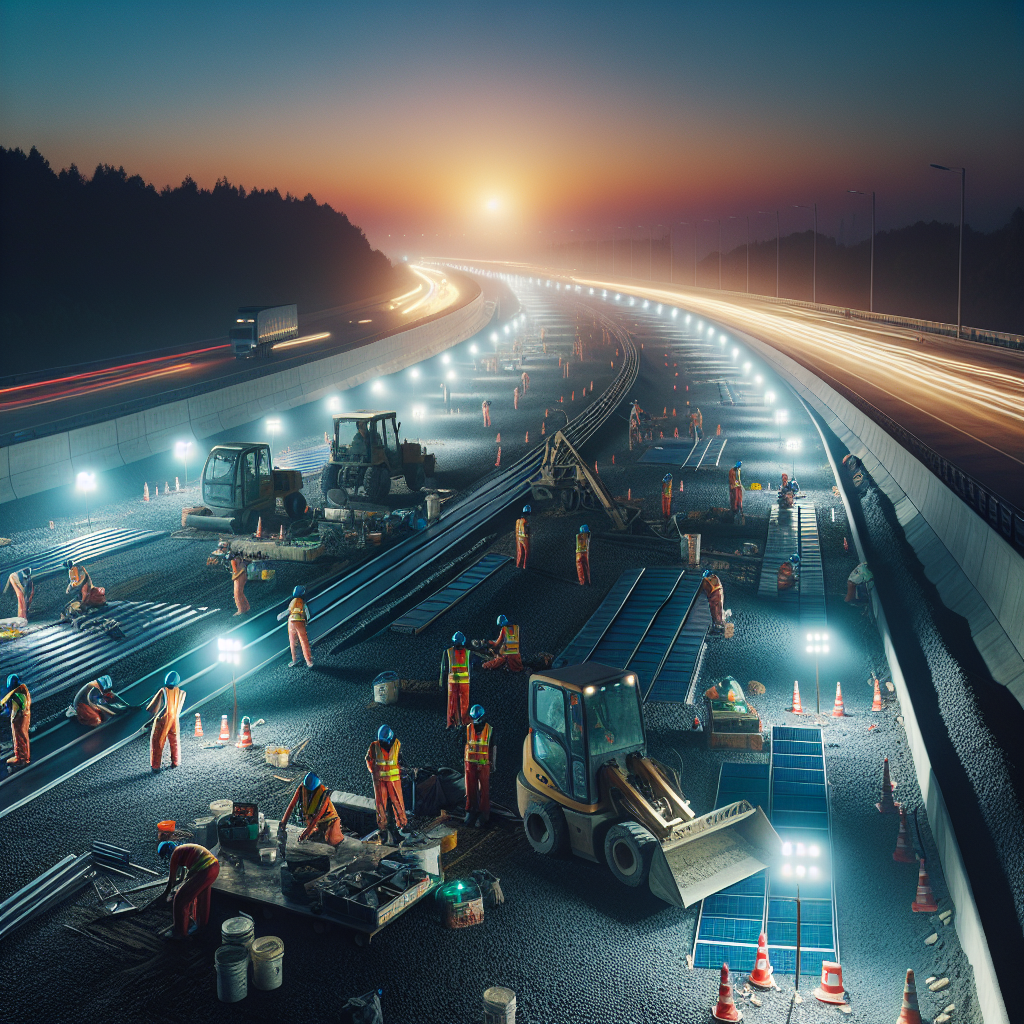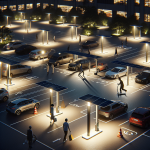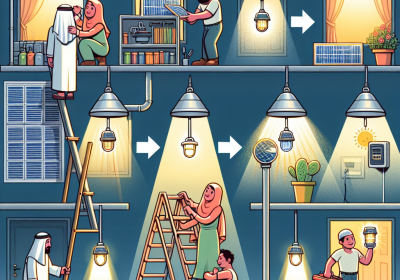Temporary Solar Lighting for Road and Highway Construction
-
Table of Contents
Temporary solar lighting for road and highway construction is an innovative solution designed to enhance safety, efficiency, and sustainability in construction zones. These portable lighting systems harness solar energy to provide reliable illumination, reducing the dependency on traditional power sources and minimizing environmental impact. Equipped with advanced photovoltaic panels, energy storage batteries, and LED lights, these systems ensure consistent lighting even in remote or off-grid locations. They are easy to install, require minimal maintenance, and can be quickly relocated as construction progresses. By improving visibility for workers and drivers, temporary solar lighting significantly reduces the risk of accidents and enhances overall project productivity.
Benefits Of Temporary Solar Lighting For Road And Highway Construction
Temporary solar lighting for road and highway construction offers numerous benefits that extend beyond mere illumination. As infrastructure projects often require work during nighttime hours to minimize daytime traffic disruptions, effective lighting becomes crucial for ensuring the safety and efficiency of construction activities. Solar lighting, in particular, presents a sustainable and cost-effective solution that addresses several challenges associated with traditional lighting methods.
One of the primary advantages of temporary solar lighting is its environmental impact. Unlike conventional lighting systems that rely on fossil fuels, solar lighting harnesses energy from the sun, a renewable resource. This significantly reduces carbon emissions and contributes to a greener construction process. Additionally, solar lighting systems typically use LED bulbs, which are more energy-efficient and have a longer lifespan compared to traditional incandescent or fluorescent bulbs. This not only conserves energy but also reduces the frequency of bulb replacements, thereby minimizing waste.
Moreover, the installation and maintenance of temporary solar lighting are relatively straightforward. Traditional lighting systems often require extensive wiring and connection to the electrical grid, which can be both time-consuming and costly. In contrast, solar lighting units are generally self-contained, with solar panels, batteries, and lights integrated into a single unit. This allows for quick deployment and repositioning as construction progresses, enhancing operational flexibility. Furthermore, the reduced need for wiring and trenching minimizes the risk of accidents and disruptions to existing infrastructure.
In addition to environmental and logistical benefits, temporary solar lighting also enhances safety on construction sites. Adequate lighting is essential for preventing accidents and ensuring that workers can perform their tasks effectively. Solar lighting provides consistent and reliable illumination, even in remote or off-grid locations where access to electricity may be limited. This is particularly important for road and highway construction, where visibility is crucial for both workers and motorists. By improving visibility, solar lighting helps to reduce the likelihood of accidents and injuries, thereby promoting a safer working environment.
Cost savings represent another significant benefit of temporary solar lighting. While the initial investment in solar lighting systems may be higher than traditional lighting, the long-term savings are substantial. Solar lighting eliminates the need for electricity from the grid, resulting in lower energy costs. Additionally, the reduced maintenance requirements and longer lifespan of LED bulbs contribute to further cost reductions. Over time, these savings can offset the initial investment, making solar lighting a financially viable option for construction projects.
Furthermore, temporary solar lighting supports compliance with regulatory standards and guidelines. Many jurisdictions have specific requirements for construction site lighting to ensure safety and minimize environmental impact. Solar lighting systems are often designed to meet or exceed these standards, providing a compliant and reliable solution. This not only helps construction companies avoid potential fines and penalties but also demonstrates a commitment to sustainable and responsible practices.
In conclusion, temporary solar lighting for road and highway construction offers a multitude of benefits that make it an attractive option for modern infrastructure projects. Its environmental advantages, ease of installation and maintenance, enhanced safety, cost savings, and regulatory compliance collectively contribute to a more efficient and sustainable construction process. As the demand for infrastructure development continues to grow, the adoption of solar lighting solutions is likely to increase, paving the way for a brighter and more sustainable future.
Installation And Maintenance Tips For Temporary Solar Lighting Systems

When it comes to road and highway construction, ensuring proper illumination is crucial for both safety and efficiency. Temporary solar lighting systems have emerged as a viable solution, offering a sustainable and cost-effective alternative to traditional lighting methods. However, the successful implementation of these systems hinges on meticulous installation and diligent maintenance. This article provides essential tips for the installation and maintenance of temporary solar lighting systems, ensuring optimal performance and longevity.
To begin with, the installation process of temporary solar lighting systems requires careful planning and site assessment. It is imperative to select a location that receives ample sunlight throughout the day, as the efficiency of solar panels is directly proportional to the amount of sunlight they absorb. Therefore, avoid areas with significant shading from trees, buildings, or other obstructions. Additionally, the orientation of the solar panels should be such that they face the sun for the maximum duration possible, typically facing south in the northern hemisphere.
Once an appropriate location is identified, the next step involves securing the solar panels and lighting fixtures. It is essential to use sturdy mounting equipment to withstand adverse weather conditions, such as strong winds and heavy rain. Ensuring that the panels are securely fastened will prevent any potential damage and maintain the integrity of the system. Furthermore, the height and angle of the lighting fixtures should be adjusted to provide optimal illumination for the construction site, enhancing visibility and safety for workers and motorists alike.
Transitioning to the electrical components, it is crucial to ensure that all connections are properly insulated and protected from moisture. Water ingress can lead to short circuits and system failures, compromising the reliability of the lighting system. Utilizing weatherproof connectors and enclosures can mitigate this risk, safeguarding the electrical components from environmental factors. Additionally, regular inspections should be conducted to identify any signs of wear or damage, allowing for timely repairs and replacements.
In terms of maintenance, one of the primary tasks is the regular cleaning of solar panels. Dust, dirt, and debris can accumulate on the surface of the panels, significantly reducing their efficiency. Therefore, it is recommended to clean the panels periodically using a soft cloth or sponge and a mild detergent solution. Avoid using abrasive materials or harsh chemicals, as they can damage the surface of the panels. Moreover, during winter months, it is essential to remove any snow or ice buildup to ensure uninterrupted energy absorption.
Another critical aspect of maintenance is the monitoring of battery health. The batteries in solar lighting systems store the energy generated by the panels and supply power to the lights during nighttime. Over time, batteries can degrade, leading to reduced capacity and performance. Regularly checking the battery voltage and capacity can help identify any issues early on. If a battery shows signs of significant degradation, it should be replaced promptly to maintain the efficiency of the system.
Furthermore, it is advisable to conduct periodic performance evaluations of the entire lighting system. This involves checking the functionality of the solar panels, batteries, and lighting fixtures to ensure they are operating optimally. Any anomalies or malfunctions should be addressed immediately to prevent further complications. Additionally, keeping a log of maintenance activities and performance metrics can provide valuable insights into the system’s health and facilitate proactive maintenance.
In conclusion, the successful deployment of temporary solar lighting systems for road and highway construction relies on meticulous installation and diligent maintenance. By selecting appropriate locations, securing components, ensuring proper electrical connections, and conducting regular cleaning and performance evaluations, these systems can provide reliable and efficient illumination, enhancing safety and productivity on construction sites.
Cost-Effectiveness Of Using Temporary Solar Lighting In Construction Projects
Temporary solar lighting has emerged as a cost-effective solution for road and highway construction projects, offering numerous advantages over traditional lighting methods. The initial investment in solar lighting may appear higher, but the long-term savings and benefits significantly outweigh the upfront costs. One of the primary reasons for its cost-effectiveness is the elimination of electricity expenses. Traditional lighting systems require a continuous power supply, leading to substantial energy bills. In contrast, solar lighting harnesses energy from the sun, a free and renewable resource, thereby reducing operational costs.
Moreover, the installation process of temporary solar lighting is relatively straightforward and less labor-intensive compared to conventional lighting systems. Traditional lighting often necessitates extensive groundwork, including trenching and wiring, which can be both time-consuming and costly. Solar lighting systems, however, are typically self-contained units that can be quickly deployed without the need for complex infrastructure. This ease of installation not only reduces labor costs but also minimizes disruptions to the construction schedule, ensuring that projects stay on track.
In addition to the direct financial savings, temporary solar lighting also offers significant maintenance advantages. Traditional lighting systems are prone to frequent failures and require regular maintenance, which can be both costly and logistically challenging, especially in remote or hard-to-reach construction sites. Solar lighting systems, on the other hand, are designed to be durable and low-maintenance. They often come equipped with long-lasting LED bulbs and robust batteries that can operate efficiently for extended periods without the need for frequent replacements or repairs. This reliability translates into lower maintenance costs and fewer interruptions to construction activities.
Furthermore, the use of temporary solar lighting aligns with the growing emphasis on sustainability and environmental responsibility in the construction industry. Solar lighting systems produce zero emissions and have a minimal environmental footprint compared to traditional lighting, which relies on fossil fuels and contributes to greenhouse gas emissions. By opting for solar lighting, construction companies can demonstrate their commitment to sustainable practices, potentially enhancing their reputation and appeal to environmentally conscious stakeholders.
Another aspect of cost-effectiveness is the flexibility and adaptability of temporary solar lighting. These systems can be easily relocated and adjusted to meet the changing needs of a construction site. This adaptability is particularly beneficial for road and highway projects, where the work zones frequently shift as the project progresses. Traditional lighting systems, with their fixed infrastructure, lack this level of flexibility and often require additional investments to accommodate changes in the construction layout. Solar lighting systems, however, can be quickly repositioned, ensuring optimal illumination throughout the project duration without incurring extra costs.
Additionally, the safety benefits of temporary solar lighting cannot be overlooked. Adequate lighting is crucial for ensuring the safety of construction workers and motorists, particularly during nighttime operations. Solar lighting systems provide consistent and reliable illumination, reducing the risk of accidents and enhancing overall site safety. This, in turn, can lead to lower insurance premiums and fewer liability claims, contributing to the overall cost-effectiveness of the project.
In conclusion, the cost-effectiveness of using temporary solar lighting in road and highway construction projects is evident through various factors, including reduced energy and maintenance costs, ease of installation, environmental benefits, flexibility, and enhanced safety. As the construction industry continues to evolve, the adoption of innovative and sustainable solutions like solar lighting will play a crucial role in driving efficiency and cost savings, ultimately contributing to the successful completion of projects.
Read more about Temporary Solar Lighting
- Introduction to Temporary Solar Lighting
- Advantages of Temporary Solar Lighting
- Temporary Solar Lighting for Events and Festivals
- Temporary Solar Lighting for Construction Sites
- Temporary Solar Lighting for Outdoor Recreation
- Temporary Solar Lighting for Disaster Relief
- Temporary Solar Lighting for Parking Lots and Garages
- Temporary Solar Lighting for Military and Security Operations
- Choosing, Installing, and Maintaining Temporary Solar Lighting









